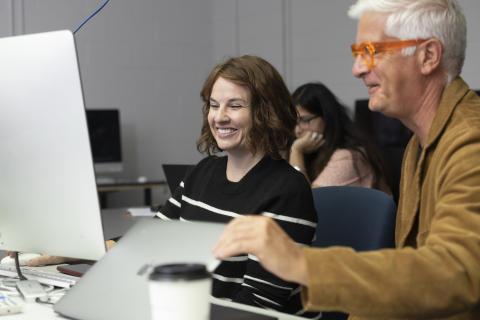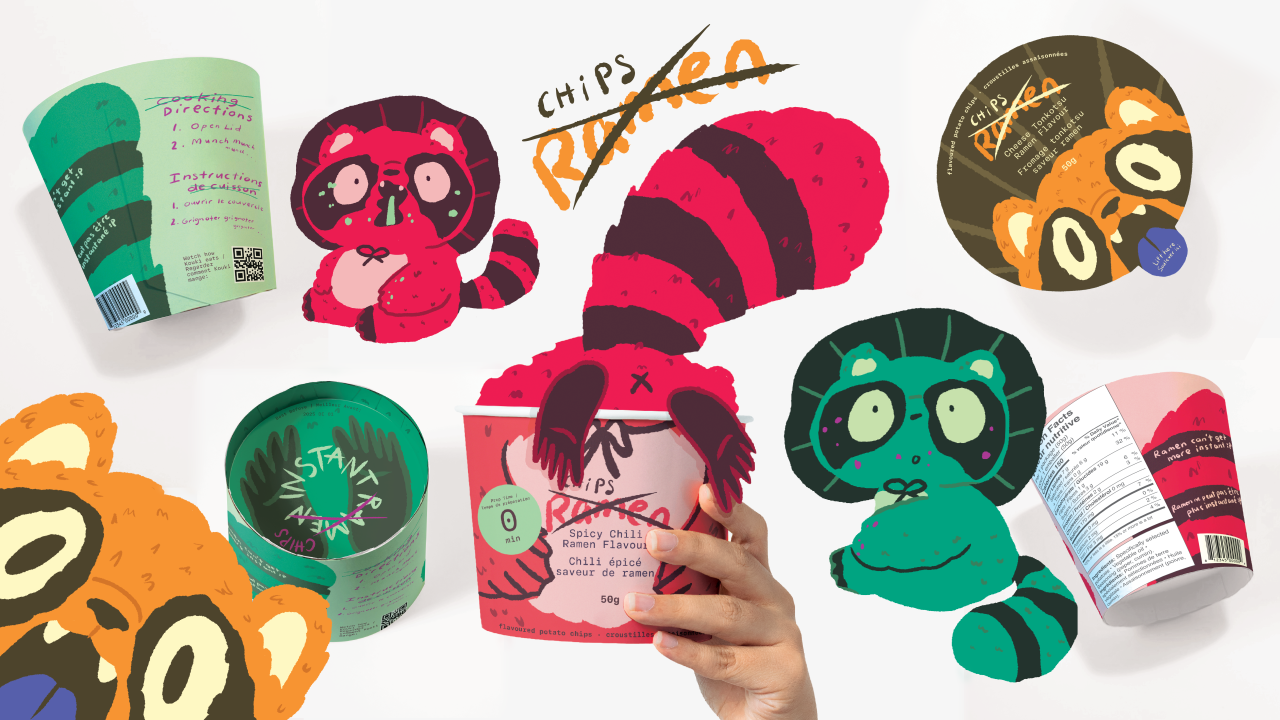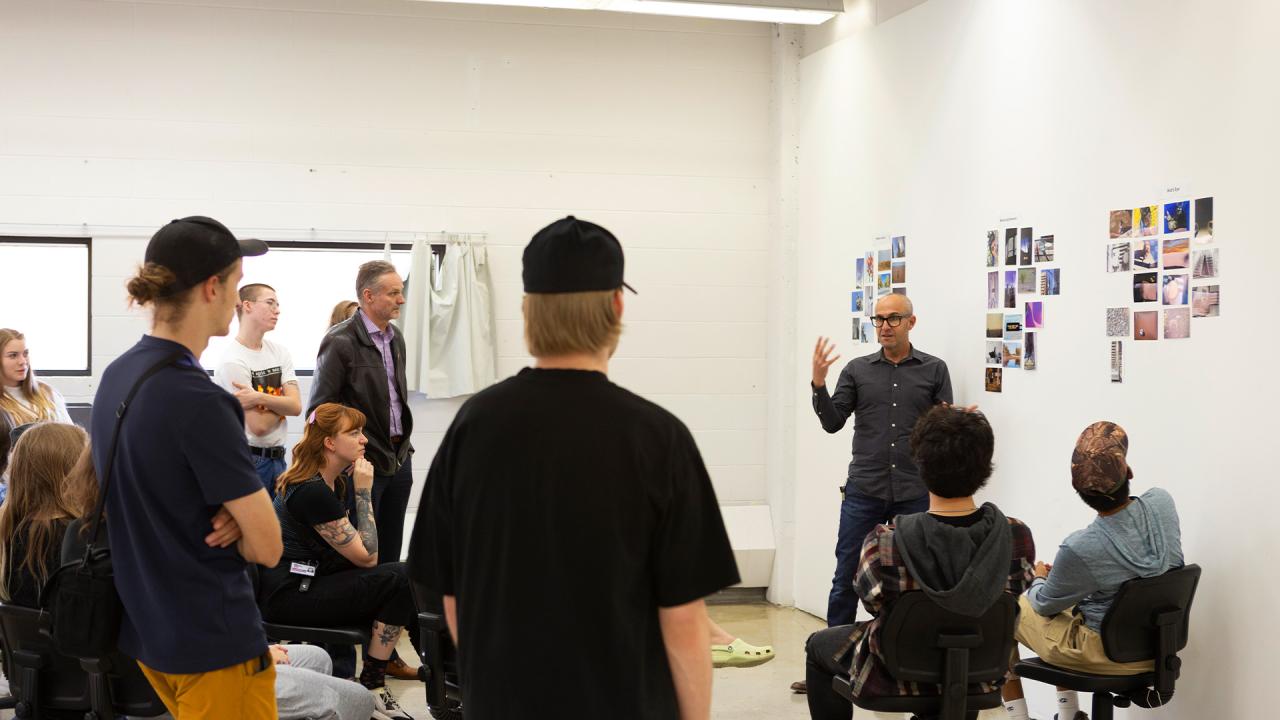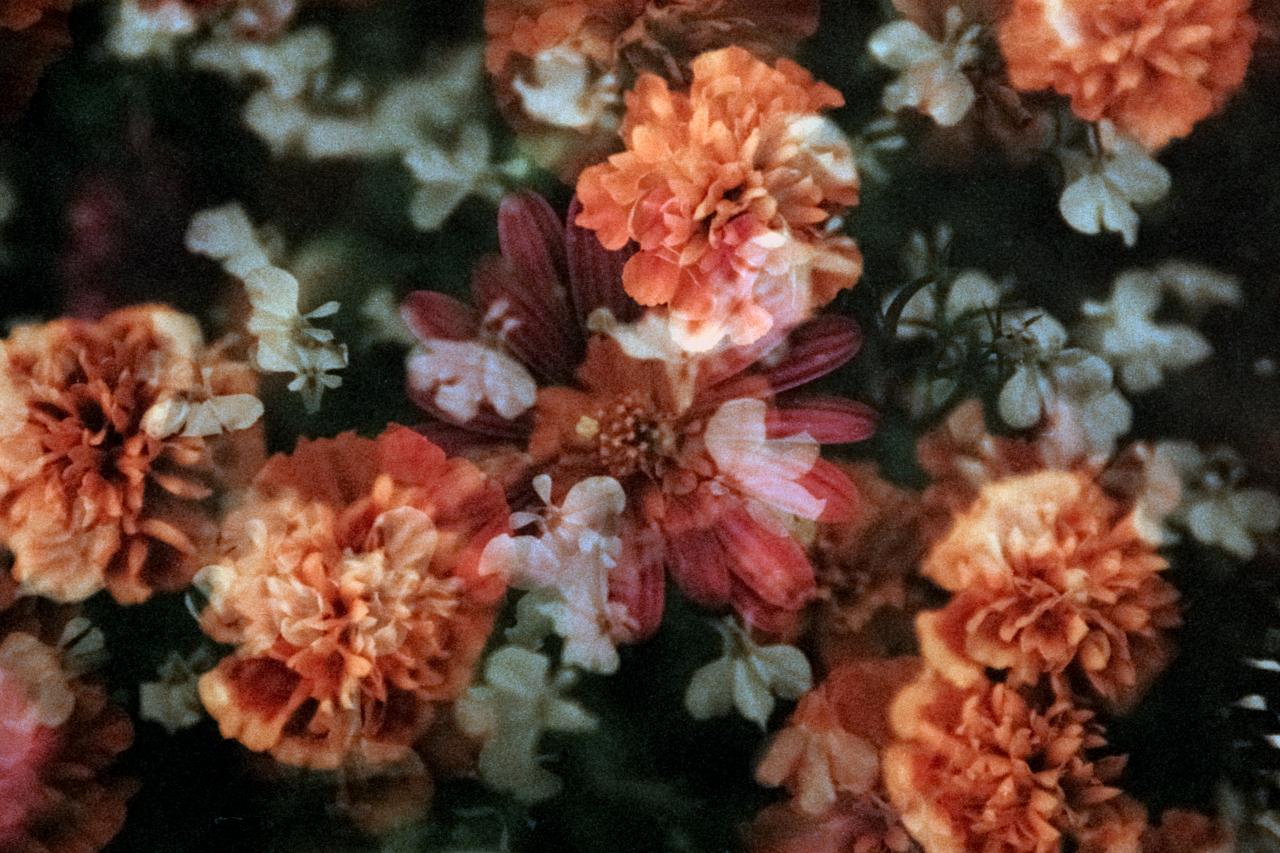A degree designed for your future.
Spend four radical years immersed in design culture, surrounded by a community dedicated to shaping how we see, think and communicate.
| Degree Type | Major | Credits | Duration | Format |
|---|---|---|---|---|
| Undergraduate | Visual Communication Design (VCD) | 120 | 4 years, Full-time | In-person, studio |
An AUArts' Bachelor of design is more than a degree—it’s your creative toolkit, built through critical exploration of design in today's world.
As a BDes student, you will:
- Develop your style and approach to design through immersive projects, critiques and technical skills.
- Communicate complex ideas visually across print, digital, motion and interactive platforms.
- Solve design challenges with originality, empathy and cultural awareness.
- Build core skills in typography, branding, illustration, editorial and interaction design.
- Establish a critical, reflective design practice informed by history, theory and ethics.
- Work collaboratively—with peers, clients and communities—to shape meaningful messages and experiences.
- Build a professional portfolio ready for agency, freelance or entrepreneurial careers.

Why choose AUArts?
- Design-focused studios, people-focused techs: Work with industry-standard software, digital labs and fabrication tools—and get to know a team of brilliant technicians who’ve got your back.
- Small class, real mentorship: With an average of just 18 students per studio class, you’ll get personal feedback and guidance from practicing designers who know the industry inside out.
- Cross-disciplinary freedom: Follow your curiosity. Pair a design stream with a fine art or craft concentration—or dive into electives across disciplines that inspire you and provide new perspectives.
- Real-world experience: Your career in design starts now. Present, pitch, collaborate and create work that aligns with client needs and expectations. Calgary’s design scene keeps a watchful eye on our BDes students.
Choose between one of two VCD streams.
What to expect in your first year.
Explore BDes streams
Graphic Design & Advertising
Design compelling messages, identities and campaigns across print, digital, motion and experiential platforms. Develop as a strategic thinker and visual communicator, build a unique portfolio and graduate ready to shape the future of design.
Illustration
Explore drawing, narrative, and image-making as tools for storytelling and communication in a variety of media. Whether you dream of working in publishing, animation, gaming or as an independent artist, you’ll graduate ready to make your mark on the world of images
What's next?
Apply to BDes
Follow these steps to submit your BDes application.
Priority applications open until February 1, 2026.
Prepare your portfolio
Everything you need to know about preparing and submitting your portfolio.
Portfolio requirementsContact us
Do you have any questions about our programs, application process or your portfolio? We're here to help!
Connect with our recruitment teamBDes Visual Communication Design - First Year Overview

Core Studio (required) | |
| DESN 101: Design Foundations (3) | Investigates the formal and expressive qualities of visual elements, developing the ability to manipulate them through techniques and principles of organization, while exploring the relationship between form and content in visual communications. | DESN 102: Colour Foundations (3) | Identifies and investigates fundamentals of colour theory and application, with hands-on opportunities to analyze and produce colour charts and apply knowledge to assigned design problems. |
| DESN 103: Digital Foundations for Design (3) | Teaches methods and tools for creating and editing digital artwork, organizing and preparing files for sharing, and producing work for different outputs such as print, web, and motion. | DESN 104: Drawing Foundations (3) | Introduces drawing as a way of recording and understanding the world, with practice in perspective, 3D forms, and classical lighting, while using line, value, texture, and composition to communicate ideas. |
Art History (required) | |
| AHIS 100: Themes in Modern and Contemporary Art and Visual Cultures 1789–Present (3) | Introduces ways of thinking about modern and contemporary art, craft, and design through visual and material artefacts, practices, and discourses, considered in their historical contexts from contemporary perspectives as conveyors of cultural values and meanings. | AHIS 101: Themes in Pre-Modern Art and Visual Cultures: Before 1789 (3) | Examines pre-modern art, craft, and design through visual and material artefacts, practices, and discourses, emphasizing thematic and conceptual comparisons across historical and contemporary cultures, and introducing art historical methods including formal, social, and gender-based analysis. |
Critical & Creative Studies (required) | |
| CCST 100: Introduction to Critical and Creative Studies (3) | Provides an introduction to critical and creative reasoning by developing skills to assess assumptions and generate imaginative ideas, using lectures, seminars, and events to explore issues such as eco-cultures, post-colonial imaginaries, social justice, art and science, post-humanism, nationalism, and globalism. | ENGL 100: Writing for Critical and Creative Practices (3) | Introduces fundamentals of writing and composition with emphasis on clear, organized expression across genres relevant to creative professions, including expository prose that engages with research materials and reviews or analyzes art and design events at and beyond AUArts. |
Studio Foundation Electives (choose any two of the listed courses) | |
| ANIM 101: Introduction to Animation (3) | Introduces basics of animated motion through short, character-driven projects, with emphasis on research, observation, drawing, and application to create emotional communication in short personal narratives. | CRMC 101: Ceramics (3) | Explore ceramics through 3D fundamentals—form, space, texture, and colour—via hand building, wheel throwing, mold making, casting, clay and glaze technology, and experimental approaches, alongside lectures, demos, field trips, and critiques that connect practice to historical and contemporary theory. |
| DRWF 110: Drawing I (3) | An introduction to observational drawing covering representational and abstract methods, with focus on line, tonal value, pictorial space, perspective, human figure, and personal content, delivered through studio projects, critiques, and independent work. | DRWF 120: Drawing II (3) | Builds on Drawing I by expanding traditional drawing through diverse strategies that explore narrative structures, photography, the body, perceptual processes, and cultural contexts, with research and experimentation central to developing individual approaches. |
| FBRE 101: Fibre-2D (3 credits) | Explores two-dimensional fibre arts through colour, texture, pattern, composition, and content using techniques such as weaving, felt, papermaking, printing, dyeing, embroidery, and mixed media, supported by projects, lectures, and critiques. | FBRE 102: Fibre 3D (3) | Investigate contemporary fibre arts through form, colour, movement, and texture while working with techniques such as soft sculpture, felt making, woven construction, wearable art, paper casting, book arts, and mixed media, supported by hands-on projects, lectures, and critiques. |
| GLSS 101: Glass Casting (3) | Learn mold-making and casting within contemporary glass practice, experimenting with forms through waste, refractory, two-part, and flexible molds using materials like glass, wax, clay, plaster, concrete, and ice, while exploring abstraction, modular construction, and historical/contemporary glass contexts. | GLSS 102: Hot Glass (3) | Experience hot glass studio practice through forming and shaping molten glass, exploring fundamental 3D design principles in relation to other media, and situating projects within historical, contemporary, and interdisciplinary art, craft, and design perspectives. |
| JWLM 101: Introduction to Jewellery and Metals (3) | An introduction to jewellery and small metals focused on 3D design, fabrication skills, and contemporary ornamentation, using diverse materials and processes while exploring the relationship between material and meaning through drawings, statements, and wearable creations. | MADT 101: Exploring Media Culture (3) | Introduces the role of media and digital technologies in contemporary culture, developing basic digital skills and applications of video, audio, motion graphics, and electronics through short workshop modules. |
| OBDF 110: Object Design and Fabrication (3) | Gain a foundation in object design by combining theory with hands-on projects in CAD, 3D modeling, and digital fabrication; explore rapid prototyping, computer-aided manufacturing, and the contextual connections between art, craft, design, and technology. | PHTG 101: Introduction to Photography (3) | Covers camera operation, photographic seeing, digital workflow, and printing, introducing techniques, concepts, and genres of photography through creative projects; students are responsible for printing, film, and processing costs, using cameras with manual controls. |
| PNTG 101: Painting (3) | Introduces contemporary painting through materials and processes including acrylic, oil, collage, and mixed media, with readings, a research project, and critiques examining contemporary and historical imagery. | PRNT 101: Print through Drawing (3) | Explores printmaking techniques that expand drawing practices, discovering unique mark-making possibilities and producing small editions of prints using presses. |
| PRNT 104: Pixels and Print (3) | Explore the intersection of digital imagery, hand-drawn work, and alternative photographic printmaking techniques such as photo manipulation, transparencies, and experimental processes, supported by technical demos, lectures, critiques, and critical discussion of outcomes. | SCLP 101: Sculpture (3) | Engage with additive, reductive, constructive, and reproductive sculptural processes in clay, plaster, wood, metal, found objects, and electronic media, exploring space and concept development through directed projects and independent study. |

